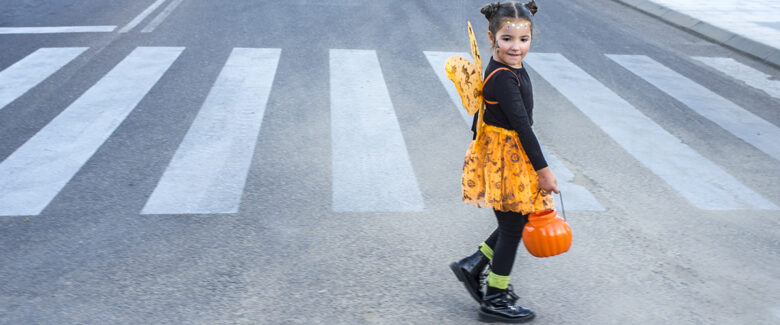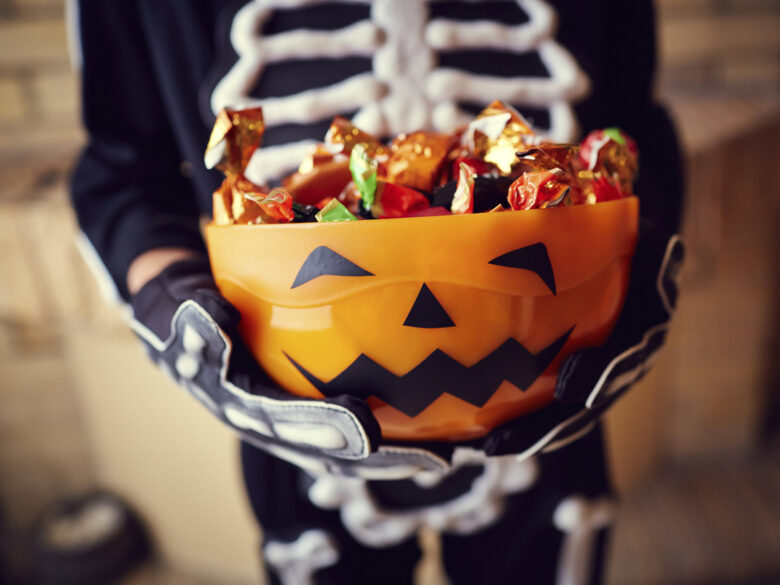“For me, Halloween evokes both excitement and concern each year,” says Alex Mario, a mother and personal injury attorney. “Putting on costumes, seeing neighborhood decorations, and, of course, collecting sweet treats all create lasting memories. However, the scary truth is that Halloween can also be one of the most dangerous nights of the year.”
Fortunately, by following a few Halloween safety tips outlined here by Mario, who works at Connecticut’s Carter Mario Law Firm, parents can help protect their kids from common hazards while enjoying all the season’s fun.
Contents
Pedestrian safety: staying visible and vigilant

One of the most significant dangers on Halloween is pedestrian accidents. According to the National Safety Council, children are more than twice as likely to be hit by a car on Halloween than on any other day of the year.
“Keep in mind the unique conditions of trick-or-treating,” Mario urges. “Children are running around in costumes that limit their movement and vision. They’re also distracted by friends and sugar. Parents, drivers, and homeowners all need to stay vigilant to prevent accidents.”
Bright-colored costumes are the safest option for helping kids stand out on dark roads. Parents should also add reflective tape to their Halloween costumes and equip children with glow sticks or flashlights. These handy devices enhance visibility and add to the festive atmosphere.
“Stay with your children while trick-or-treating,” Mario advises. “Before heading out, go over basic ground rules like staying in well-lit areas, using crosswalks, and obeying traffic signals. Instruct them to stop and look both ways before crossing each street. Also, make sure they know only to visit homes where they’re welcome, which is usually indicated by the porch light being on.”
Costume safety: prioritizing comfort and flameless fun
A costume should be thrilling but never at the cost of safety. Potential dangers in costumes include tripping hazards, flammable materials, and obstructive masks.
With open flames from bonfires and decorations, parents should help kids choose flame-resistant costumes, wigs, and accessories. Fabric like polyester or nylon is less likely to catch fire.
“Your kids will be doing a lot of walking on Halloween,” notes Mario, “so choose your costumes wisely. Costumes should be the right length to avoid tripping. If your child really wants a mask, ensure it does not restrict peripheral vision. To prevent overheating, choose a costume that allows for proper airflow.”
Face paint or makeup offers an alternative to masks. However, parents must read labels carefully to purchase non-toxic and hypoallergenic brands and take the extra precaution of conducting a patch test before application to avoid allergic reactions.
Treat safety: inspecting for tricks in treats

While it may seem tedious, parents must examine all treats before allowing children to eat them. They should look for signs of tampering, such as discoloration or opened wrappers.
Mario urges parents to be especially conscious of their child’s allergies during this time of year. “If your kids have allergies, educate them about the importance of not eating treats without your inspection. Consider organizing a candy swap with other parents to accommodate everyone’s dietary needs.”
Parents should exercise extreme caution with homemade treats or treats without packaging. While it may come from a well-meaning neighbor, consuming sealed, store-bought treats is safer.
Home safety: ensuring a safe environment for trick-or-treaters
Homeowners also bear a responsibility to ensure the safety of trick-or-treaters visiting their property. If a trick-or-treater is injured due to negligence, the homeowner could be held liable.
“If your porch light is on during this night, trick-or-treaters will think you are welcoming them to come knocking,” says Mario. “However, even if your lights are off, you still have a duty to warn people about dangers on your property. Provide clear warning signs about dangerous conditions, such as dogs or pools. If not participating in trick-or-treating, it’s also a good idea to put up a sign asking visitors to stay away.”
Before the big night, homeowners should conduct a thorough inspection of their property. Walkways should be clear of tripping hazards such as garden hoses, extension cords, and toys. Illuminating the property can also prevent accidents.
“Uneven or dangerous walkways should be clearly marked with proper lighting, cones, or flags,” Mario says. “If possible, fix the issue or block off that path and provide a safer route to your candy bowl.”
Homeowners are wise to secure their pets in a safe area. Even the most good-natured pets can become stressed with Halloween’s rush of visitors.
“In the event of an injury, document the incident,” says Mario. “Take photographs and collect statements if possible. This information can be critical if legal action ensues.”
Tech safety: leveraging modern solutions
Source: freepik.com
Today’s technology can assist parents in maintaining safety. If older children are venturing out on their own, parents can equip them with GPS tracking apps and monitor their whereabouts in real time. Children should always carry a cell phone or an ID card with emergency contact information.
“Halloween should be a magical evening filled with fun and joy, not ruined by avoidable accidents,” concludes Mario. “By taking these simple precautions, we can dramatically reduce risks and ensure our kids enjoy the festivities safely. So, leverage your legal knowledge and practical safety tips to protect your little ones from common hazards and have a happy Halloween.”
